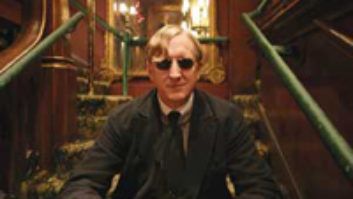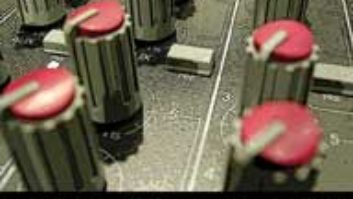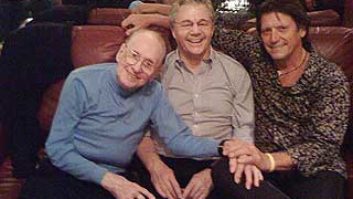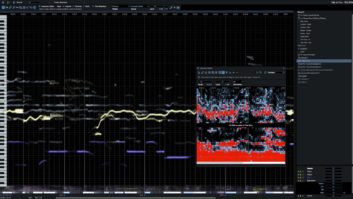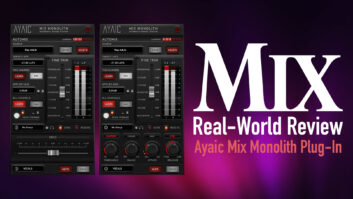TALKBACK: YOUR NASHVILLE STORIES
In recent “Feedback” sections and MixLine e-newsletters, we asked readers to tell us about their most memorable Nashville sessions and how the scene has changed over the years.
Several years ago, the movie The Last Castle, starring Robert Redford, was being filmed at the old prison here in town. A friend of mine, Dean Hall, and I were in the movie. It came to Dean’s attention that they were accepting songs for the movie soundtrack. The deadline: the following morning!
Dean had already written a song, “Chiseled In Stone,” that would be perfect for the movie, but did not have a version of it recorded. The movie director, Rod Lurie, gave him till around 6 a.m. the next morning to put a version in his hands.
Dean asked me if I felt like doing a little “mercenary recording.” At the time, I had a small studio in a building behind my house just outside of downtown Nashville. It was around 10 p.m. before we got into the studio. While we were driving to the room, Dean [was] on the phone calling session players. Only in Nashville could you call so many people this late in the game and have all of them show up! Not just anyone, either — some of this town’s most gifted players. The keyboard player was playing a gig at the time and couldn’t be there till around 1 a.m. or so. Once he arrived and set up, it was on.
Dean had everything charted out. They went through the song once and then we printed it. We cut Dean’s vocals and then did a finished mix. We wrapped things up around 5 a.m. Normally, we would have been bused onto the prison property, but on this day we drove right up to the [prison’s] side entrance. Dean rushed in and delivered the song — with minutes to spare.
Our song made it! Not only was it played during the movie, but it was also played during the closing credits. It was a fun job, and definitely what Nashville is all about.
Ronnie Honeycutt
Sound Dragon Studio
Goodlettsville, Tenn.
I was mixing at GroundStar one evening with Ronnie Milsap. He wanted to take the mix over to the Woodland mastering suite to listen to the mix on their monitors. So when we got there, one of Woodland’s engineers told us that Conway Twitty was mixing in Woodland’s A control room. At the time, Woodland had drapes on the control room windows that they would close off to the studio when a mixing session was going on. I was asked to go in to A and pull the drapes open. And when I did, Ronnie Milsap, his producer, Tom Collins, and a Woodland engineer, Les Ladd, had their “hams” pressed up to the control room glass, mooning Conway.
Conway got on the studio talkback, and asked Ronnie, “Is that some more of that Milsap magic?” (Ronnie’s record was titled Milsap Magic.) I don’t know when I have ever laughed so hard — and so did Conway.
Ben Harris
In 2004, I had the pleasure of arranging and producing 12 songs for a new-age orchestral project by composer Fred Lykes entitled Journey to the Stars. Three sessions lasting three hours each, with 32 musicians — strings, woodwinds and French horns — went down to Ocean Way Nashville. A widely spaced stereo pair of Neumann M50s captured the room, with spot mics over each section. The session was engineered by Bob Clark, a veteran orchestral expert. It was recorded to RADAR and then transferred to Pro Tools.
The orchestra players were contracted by Carl Gorodetsky, and the playing was first-class. The room, which has very high ceilings and a springy wood floor, sounds wonderful. The “double Neve” [custom Neve VRP 96-input console] in the control room has excellent preamps.
The total cost for the session (musicians, studio and travel) was about $30,000 — and worth every penny! The composer was very happy with the final product, which we finished at our facility in Orlando, Fla.
It was a thrill to hear it go down and one of the highlight projects of my life!
Michael Hurley
LONE PINE STUDIOS OF MICS AND TUBES
I recently read [Eddie Ciletti’s] Mix article online (“Tech’s Files: Micro-lution,” February 2007) with interest. I would like to respond concerning some of the elements of your article.
In your summary under “New Vistas,” you indicate that the 7586 tube has higher gain than the similar 6CW4. This is incorrect. The mu (or gain) of the 7586 (according to the RCA Radiotron Handbook) is 35, whereas with the 6CW4 it is 70.
Additionally, your editing of Neumann’s published documentation detailing modifications for the U47 and U48 by way of substituting the VF-14 tube with another Nuvistor is misleading. Neumann introduced the U47 in 1949. Nuvistors were not introduced by RCA until 1959, some 10 years later. The VF-14 is not a Nuvistor but an RF/IF-Stage pentode.
Mark Zaluski
Thanks for your input. I apologize for the error; you were the first to catch it. In a future “Tech’s Files” column, I plan on including a tube-compatibility table with filament and “mu” specs.
I only recently revisited a few Nuvistor data sheets after acquiring a pair of AKG C-61 mics. I was amazed at the Nuvistor’s low output level. Inside was a 13CW4 (which has a 13-volt filament) where there should have been a 7586 (which has a 6-volt filament)! In that case, no amount of gain can make up for the lack of correct filament voltage.
As for the U47: Many years after it was released, the supply of VF-14s was running low, so Neumann offered an upgrade kit. You are correct — the VF-14 is a pentode, but it is wired as a triode. While the 13CW4 might not have been the best sonic choice, its low-filament current provided an option that required the fewest changes to the mic and the power supply.

